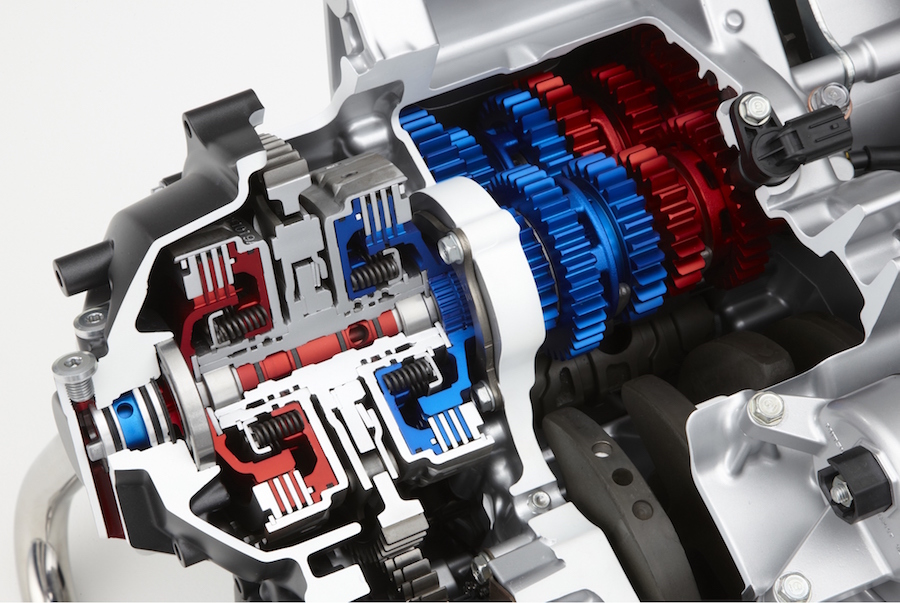Honda unveiled the world’s first motorcycle-specific Dual Clutch Transmission (DCT) in September of 2009. Slated for use in the firm’s then yet-to-be released VFR1200F sports tourer, the idea of an electronically operated manual gearbox to achieve seamless gearshifts made a lot of sense for a large-capacity roadbike with sporting intentions (just ask Marc Márquez).
The idea was simple enough. Each time a clutch is engaged to change gears, a slight pause in acceleration – and therefore traction – occurs. So by employing separate clutches for the even- and odd-numbered gears, Honda was effectively able to achieve a seamless-shifting gearbox. Whether the rider chooses to change gears manually, or through the system’s automatic capability, the electronically operated DCT detects an upshift and engages the next gear before releasing the clutch on the previous one. And all the rider feels is consistent acceleration.
Now, seven years later, Honda has included the technology on what is its first serious dirt-ready adventure bike in many years. We have a look at how Honda’s R&D team has adapted the technology to not only be applicable off the beaten track, but what it’s done to convince would-be Africa Twin owners it’s worth both the $2500 priceand 10kg weight premiums over the base manual gearbox model.
Is a hard-core adventure bike the best place for a Dual Clutch Transmission? Honda thinks so
Then
Not to be confused with Continuously Variable Transmission (CVT) which is essentially a single variable gear responding to throttle input, DCT is a six-speed gearbox with an automated clutch and shift operation that retains the conventional acceleration feel of a manual transmission.
In typical Honda style, the system debuted in 2009 with sophisticated options. It was offered with a standard manual mode, where the rider could manually toggle through the gears using the bar-mounted triggers, as well as two automatic modes – D for drive and S for sports.
As the names imply, D was the sensible option, which aimed for the perfect balance between fuel economy and power delivery, while S-mode meant longer time between shifts to allow higher RPM to be held for longer, thus delivering more engaging performance.
The technology has been commonplace in high-end passenger vehicles for over a decade, however, Honda remains the only motorcycle marque to have adopted DCT technology. It has managed to package it in such a way that it can use common crankcases between models, but there’s no getting away from the fact that two of anything will be twice as heavy.

Now
Rather than just packaging the existing DCT into a more compact application suitable for adventure use, Honda has tweaked it to ensure off-road functionality.
The original road-biased system would change gears depending on the inputs of both the engine’s RPM and throttle position, but with the recent introduction of the IMU, Honda has been able to tailor the process to the needs of an off-road rider.
The system retains the three modes, and while both the standard manual and automatic D modes remain unchanged, the automatic S mode has been revised to include three adjustable shift patterns (S1, S2 and S3). On top of this, Honda has also introduced the G-switch.
While RPM and throttle position still play an integral role, once the G-switch is activated the Africa Twin’s electronics are also detecting if the bike’s heading up or down a hill and is altering the shift rate accordingly. As well as this, regardless of the mode you’re in, the amount of clutch slip between gear changes is reduced to further improve traction. At low RPM, when the bike assumes you’re traversing a gnarly section, the electronics look after the more precise clutch and power applications in much the same way a skilful rider on a manual bike would.
Is it enough to convince the adventurers? Time, and sales figures, will tell.











